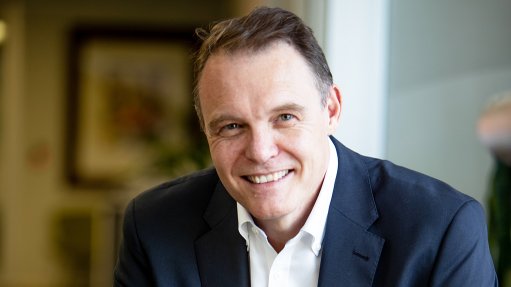Gweezy’s smallanyana flaw
Gwede Mantashe is a jolly good fellow. And a reasonable one too. But events of the past couple of weeks betray a smallanyana (read ‘smallish’) flaw on his part: an inability to read his boss’s lips.
Let’s dip into the past first and dredge up some memories. The date is February 11, 2021, and the occasion is President Cyril Ramaphosa’s State of the Nation Address. Quite some time into the speech, the President draws his listeners’ attention to the dire electricity shortage in the country. As the cameras continue to roll, he intones: “Recent analysis suggests that easing the licensing requirements for new embedded generation projects could unlock up to 5 000 MW of additional capacity and help to ease the impact of load-shedding.
“We will therefore amend Schedule 2 of the Electricity Regulation Act, 2006, within the next three months to increase the licensing threshold for embedded generation”.
Before and after the President’s address, nearly the entire who’s who of South Africa’s energy sector opined on the limit that should be allowed for licence-exempt embedded generation – also known in the industry as self- or distributed generation – with some preferring a cap of 50 MW, compared with the current 1 MW.
Mantashe – or Uncle Gweezy to some, perhaps on account of his grizzled goatee, which gives him an avuncular air – is the Minister of Mineral Resources and Energy. Over the past few months, he has made it known that, if he had his way, 10 MW – and no more – would be the maximum capacity of embedded generation projects that those who do not wish to go through the palaver of applying to the National Energy Regulator of South Africa (Nersa) may develop. He has been at pains to explain that allowing higher caps would wreak havoc on the transmission grid, which is why, during numerous engagements with the media, he clarified that anyone could install as much capacity as he or she liked, provided the electricity generated is for self-consumption and does not need to be wheeled through State-owned utility Eskom’s constrained transmission grid.
In any case, Mantashe said when he delivered his department’s Budget Vote last month, a survey of 10 000 respondents had shown that most developers were not yet ready to purse projects with a generation capacity of more than 10 MW.
As regular readers of this magazine would know, Ramaphosa announced earlier this month – in the midst of Stage 4 load-shedding – that, within 60 days, new regulations would be gazetted to raise the cap on embedded power generation projects that do not require a Nersa licence to 100 MW. Crucially, developers of such projects would be able to wheel any electricity that is surplus to their requirements through Eskom’s transmission grid. Needless to say, wheeling will be subject to possible charges and connection agreements with the power utility and municipalities to ensure regulatory compliance and system stability.
I have reread the President’s State of the Nation Address, especially the portion dealing with South Africa’s energy crisis. The message is very clear, and it was reiterated in his speech announcing the raising of the licence-exempt threshold to 100 MW: South Africa needs to swiftly and comprehensively tackle the electricity challenges that the country faces so that the economy recovers fast enough from the ravages of Covid-19 and the lockdown measures put in place to curb the spread of the pandemic.
Mantashe definitely failed to read the President’s lips accurately back in February. Otherwise, the dilly-dallying could have been avoided, and we could be talking about some progress having been made on some of the planned embedded generation projects. We hear, for instance, that projects with a combined capacity of 1.6 GW will be developed by mining companies over the next 36 months.
Article Enquiry
Email Article
Save Article
Feedback
To advertise email advertising@creamermedia.co.za or click here
Comments
Announcements
What's On
Subscribe to improve your user experience...
Option 1 (equivalent of R125 a month):
Receive a weekly copy of Creamer Media's Engineering News & Mining Weekly magazine
(print copy for those in South Africa and e-magazine for those outside of South Africa)
Receive daily email newsletters
Access to full search results
Access archive of magazine back copies
Access to Projects in Progress
Access to ONE Research Report of your choice in PDF format
Option 2 (equivalent of R375 a month):
All benefits from Option 1
PLUS
Access to Creamer Media's Research Channel Africa for ALL Research Reports, in PDF format, on various industrial and mining sectors
including Electricity; Water; Energy Transition; Hydrogen; Roads, Rail and Ports; Coal; Gold; Platinum; Battery Metals; etc.
Already a subscriber?
Forgotten your password?
Receive weekly copy of Creamer Media's Engineering News & Mining Weekly magazine (print copy for those in South Africa and e-magazine for those outside of South Africa)
➕
Recieve daily email newsletters
➕
Access to full search results
➕
Access archive of magazine back copies
➕
Access to Projects in Progress
➕
Access to ONE Research Report of your choice in PDF format
RESEARCH CHANNEL AFRICA
R4500 (equivalent of R375 a month)
SUBSCRIBEAll benefits from Option 1
➕
Access to Creamer Media's Research Channel Africa for ALL Research Reports on various industrial and mining sectors, in PDF format, including on:
Electricity
➕
Water
➕
Energy Transition
➕
Hydrogen
➕
Roads, Rail and Ports
➕
Coal
➕
Gold
➕
Platinum
➕
Battery Metals
➕
etc.
Receive all benefits from Option 1 or Option 2 delivered to numerous people at your company
➕
Multiple User names and Passwords for simultaneous log-ins
➕
Intranet integration access to all in your organisation


















